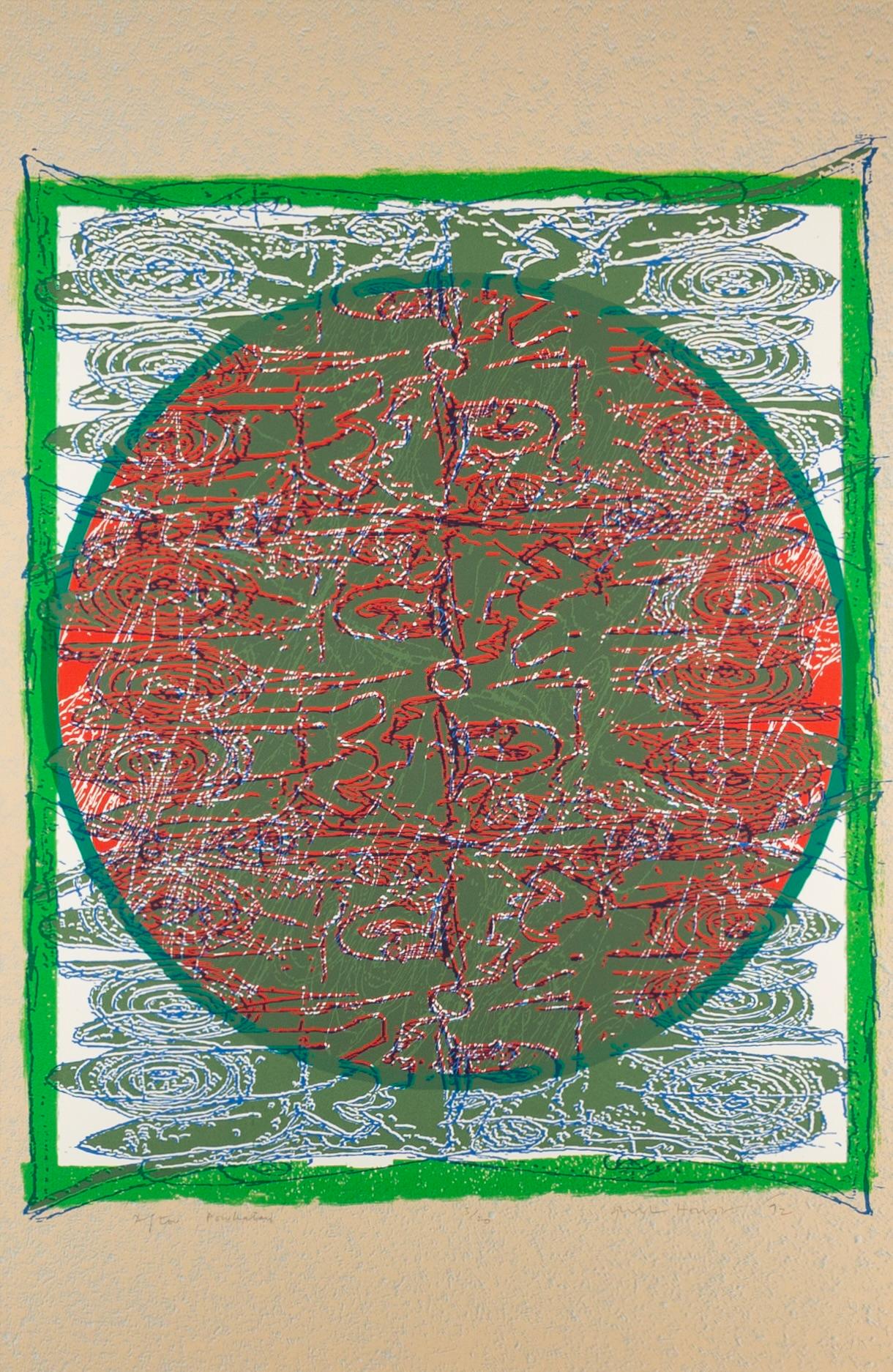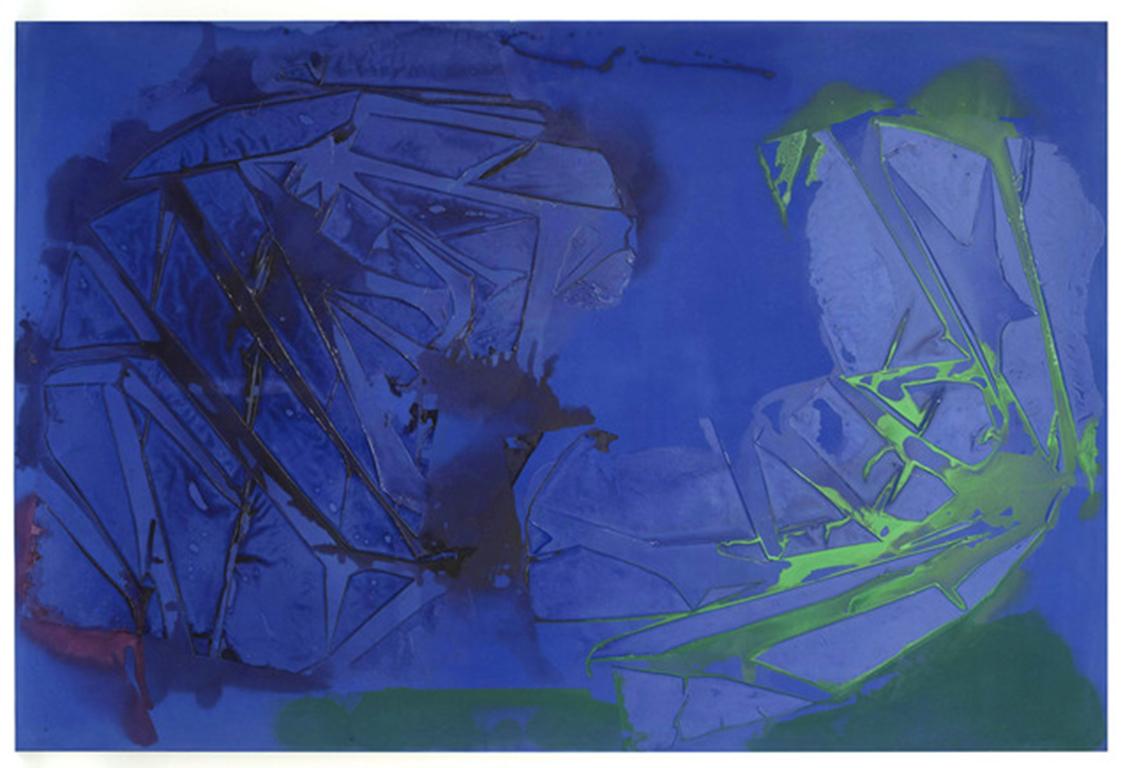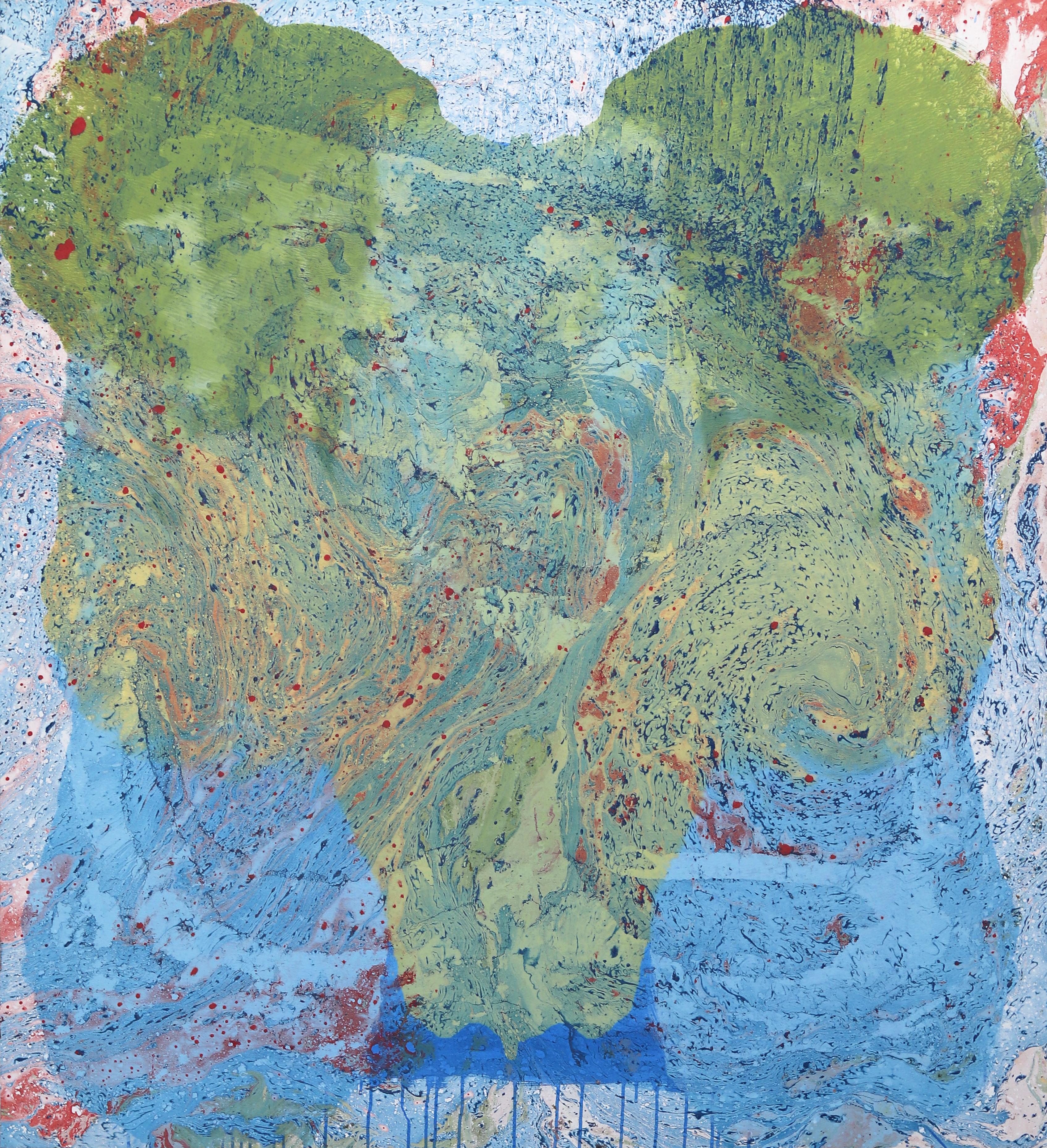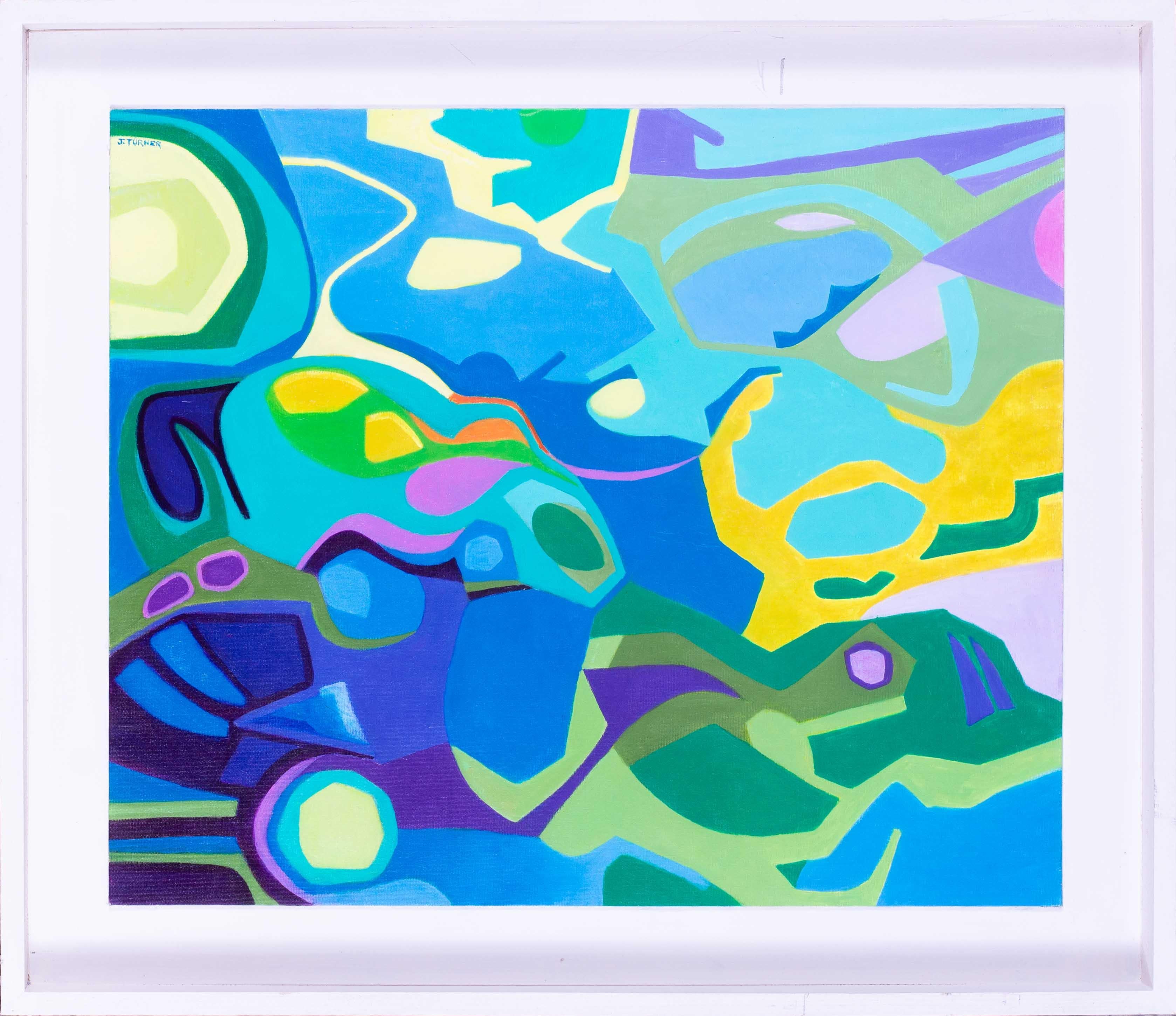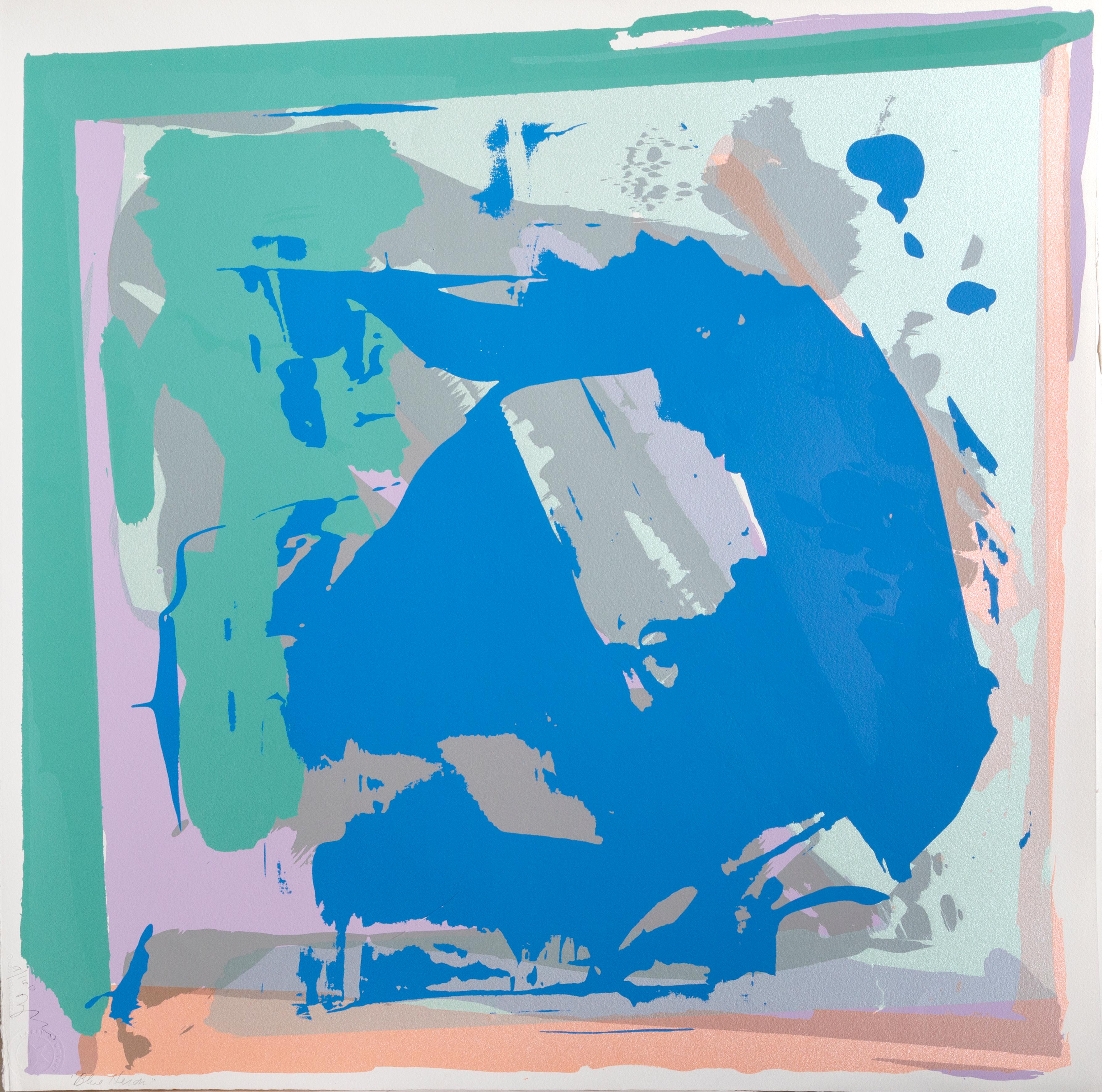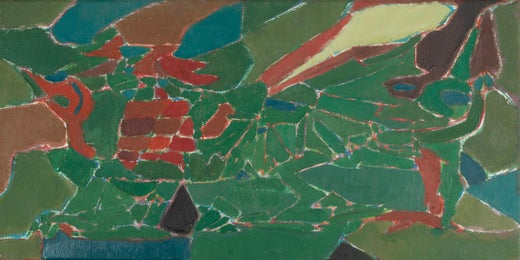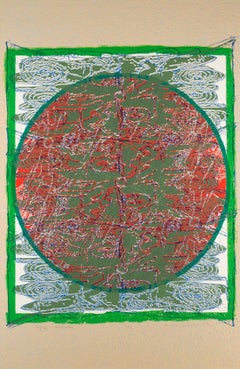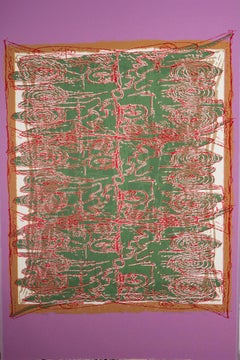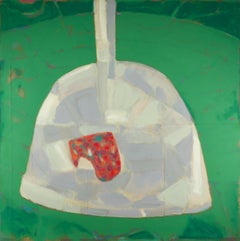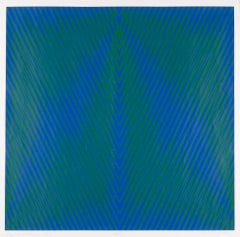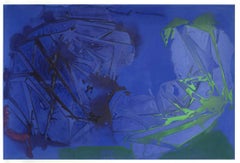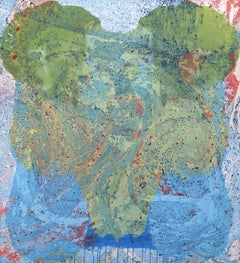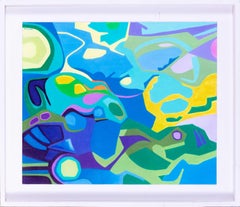Items Similar to Blue Buckler, from the After Powhatan Suite - Large Blue + Green Abstract Print
Want more images or videos?
Request additional images or videos from the seller
1 of 11
Gordon HouseBlue Buckler, from the After Powhatan Suite - Large Blue + Green Abstract Print1992
1992
$5,303.30
£3,950
€4,572.09
CA$7,451.96
A$8,183.71
CHF 4,212.66
MX$97,920.54
NOK 53,636.49
SEK 50,265.38
DKK 34,146.26
About the Item
Gordon House 1932-2004
Blue Buckler, from the After Powhatan Suite, 1992
unframed, screenprint
121 x 80.6 cm
47 5/8 x 31 3/4 in
signed, titled, dated and numbered 4/20 in pencil
Gordon House was born in 1932 in Pontardawe, South Wales. Early exposure to art on trips to the Glynn Vivian Art Gallery as a young boy inspired House towards creative endeavors and at the age of fourteen he was awarded a grant to enter art school which he accepted. From 1947 to 1950 he studied at Luton School of Art, Bedfordshire, and St. Albans School of Art, Hertfordshire. House's contemporaries included Richard Smith and John Plumb with whom he remained close. During the early fifties, after finishing art school, House began work as assistant to the ecclesiastical sculptor Theodore Kern. He also spent time at an advertising studio where he honed his burgeoning skills in typography and graphic design. In 1952 House was offered the position of designer for Imperial Chemical Industries Plastics Division where he stayed until 1959. This was followed by two years spent as graphic designer for the Kynoch Press in London. In 1961 House set out on his own as a self-employed designer and typographer. Initially this was supplemented by part-time teaching at art schools in and around London but by 1964 House was able to devote himself entirely to his design work which freed up valuable time to concentrate on his own artistic output in the studio.
In the late fifties, informed by the new art emerging from America and that of his contemporaries in England, House began to create large-scale abstract works which he was invited to show in 1959 at Dennis Bowen's legendary New Vision Centre in Marble Arch.
House was an active participant in the vibrant London art scene of the sixties, regularly attending lectures, exhibitions and discussions. In 1960 he exhibited in 'Situation' the key abstract exhibition of the decade held at the RBA Galleries. Other participating artists included Robyn Denny, Bernard and Harold Cohen, Gillian Ayres, John Hoyland, Richard Smith and William Turnbull among others. These artists, united by a common admiration for American Abstract Expressionism, were frustrated by the lack of exposure given to large-scale abstract works in commercial galleries so they organised their own exhibition. The name was derived from the participants' idea that an abstract painting that occupied the whole field of vision would involve the spectator in an 'event' or 'situation'. This exhibition was followed by 'New London Situation' in 1961 and a nationwide touring Arts Council presentation in recognition of the significance of the two earlier shows.
In 1961 House began producing his first prints at the Kelpra Studio, run by Chris and Rose Prater, where he made the earliest fine art screenprint ever to be produced in Britain. Artists such as Paolozzi and Hamilton followed in his footsteps and together they started a printmaking revolution in Britain. They cemented the medium of the screenprint in the world of fine art as opposed to the commercial sphere and secured the reputation of Kelpra in the process. Later, together with Cliff White, House set up the White Ink (Ltd.) print studio in London, where he produced etchings and wood engravings on a series of magnificent antique printing presses he had collected. White Ink soon gained a reputation for innovative and high quality printmaking, attracting artists such as R. B. Kitaj, Richard Smith, Joe Tilson, Sidney Nolan, Victor Pasmore, Eduardo Paolozzi, Bernard Cohen and Elisabeth Frink.
Printmaking was to remain a key part of House's oeuvre throughout the rest of his career, whether in the medium of screenprint, etching, woodcut, linocut or lithograph. In 1981 a retrospective exhibition of his graphic works opened at the Carnegie Institute, Pittsburgh, and in 1982 this travelled to the Brooklyn Museum, New York. These shows were instrumental in bringing House's prints to the attention of a wider American audience.
- Creator:Gordon House (1932, British)
- Creation Year:1992
- Dimensions:Height: 47.64 in (121 cm)Width: 31.74 in (80.6 cm)
- Medium:
- Movement & Style:
- Period:
- Condition:
- Gallery Location:Kingsclere, GB
- Reference Number:1stDibs: LU2718217117552
Gordon House
The Guardian wrote of Gordon House, upon his death in 2004: Many of the works made during his last years by the painter and graphic designer Gordon House, who has died aged 71, referred back to his birthplace in the Swansea valley. He spent his earliest years in the steel town of Pontardawe. In Tin-pan Valley, the memoir he published earlier this year, he recalled "the clamour of steel mills ... the tinplate works and pithead gear" and "dynamite blasting as coal seams were struck higher up the valley". Unemployment and the depression of the 1930s led Gordon's parents to take him from the valleys of south Wales to the order and designed coherence of Letchworth, "Hertfordshire's first garden city". After leaving school at 14, he went to study, first, at Luton School of Art. For a while after that, he worked in a hospital, before, with the aid of a scholarship, moving on to St Albans School of Art. By 1961, Gordon had become established among a new generation of artists as an independently minded and adventurous painter and designer. The previous year, he had shown his large, bold, hard-edged canvasses at the important London "Situation" exhibition of large-scale abstract painting, and had designed the catalogue for that exhibition. As the 1960s moved on, Gordon designed for the pop world. He worked for the Beatles, designing their White album and the back of the Sergeant Pepper album, for which his longtime friend Peter Blake designed the front. Later, he designed Wings' first album. He delighted in the creative energy of others, and so could respond to the talents of musicians and artists alike. Gordon made paintings throughout his life as a designer. During the 1960s and 70s, his canvasses and prints reflected the dramatic tensions of his graphic design; by the 1980s, Wales had become his constant subject matter. The surface, texture and colour of his paintings softened. No doubt, he needed to pay homage to the places and the people who had shaped him, just as he always paid homage to the artists for whom he designed. His canvasses reduced in size, becoming palm-of-the-hand landscapes. He spent much time in Wales and, in his final years, he used his brush to walk a path through memories of collieries, valleys, smoking stacks, rows of cottages and the people who had first nurtured him.
About the Seller
No Reviews Yet
Vetted Professional Seller
Every seller passes strict standards for authenticity and reliability
Established in 2010
1stDibs seller since 2024
43 sales on 1stDibs
Typical response time: 8 hours
- ShippingRetrieving quote...Shipping from: Kingsclere, United Kingdom
- Return Policy
More From This Seller
View AllAfter Powhatan, from the After Powhatan Suite, 1992 - Large Green Abstract Print
By Gordon House
Located in Kingsclere, GB
Gordon House was born in 1932 in Pontardawe, South Wales. Early exposure to art on trips to the Glynn Vivian Art Gallery as a young boy inspired House towards creative endeavors and ...
Category
1990s Abstract Prints
Materials
Screen, Paper
Red Tracery, from the After Powhatan Suite - Large Pink + Green Abstract Print
By Gordon House
Located in Kingsclere, GB
Gordon House 1932-2004
Red Tracery, from the After Powhatan Suite, 1992
unframed, screenprint
101.6 x 71.1 cm
40 x 28 in
signed, titled, dated and numbered 4/20 in pencil
Gordon Hou...
Category
20th Century Abstract Abstract Prints
Materials
Screen
Scooped Palette - Large Green Painting with Bold Geometric Shapes, Abstracted
By Gordon House
Located in Kingsclere, GB
Gordon House was born in 1932 in Pontardawe, South Wales. Early exposure to art on trips to the Glynn Vivian Art Gallery as a young boy inspired House towards creative endeavors and ...
Category
21st Century and Contemporary Paintings
Materials
Canvas, Oil
Symo (Blue/Green), 1967 - Abstract Geometric Lines Screen Print by Richard Allen
By Richard Allen
Located in Kingsclere, GB
Richard Allen was an Abstract artist of the 20th century who worked across painting, graphic and technological media.
Allen was born in Worcester in 1933. Influenced by his fathe...
Category
20th Century Abstract Prints
Materials
Screen
Middlebere Channel, 2024 - Horizontal Abstract Acrylic Painting with Green
By Peter Joyce
Located in Kingsclere, GB
Peter Joyce was born in Poole, Dorset, and was educated at Bournemouth & Poole College of Art & Design from 1980. He went on to study at Stourbridge College of Technology & Art and q...
Category
2010s Abstract Paintings
Materials
Acrylic, Board
Site Visit, from the FLW/ Highbury Portfolio Suite - 20th C Abstract Print
By Gordon House
Located in Kingsclere, GB
Gordon House 1932-2004
Site Visit, from the FLW/ Highbury Portfolio Suite, 1987
homemade print from an office copy machine
42 x 29.7 cm
16 1/2 x 11 3/4 in
Gordon House was born in 1...
Category
Late 20th Century Abstract Abstract Prints
Materials
Color
You May Also Like
Untitled 3, Blue/Green Minimalist Abstract Lithograph by Bruce Porter
By Bruce Porter
Located in Long Island City, NY
Artist: Bruce Porter, American (1948 - )
Title: Untitled III
Medium: Lithograph, signed and numbered in pencil
Edition: 14
Image Size: 24 x 18 inches
Size: 28 x 22 in. (71.12 x 55.88...
Category
1980s Abstract Abstract Prints
Materials
Lithograph
"QUANTUM ENTANGLEMENT", Abstract Painting, Acrylic on Canvas, Blue Indigo Green
By Jeffrey Kurland
Located in Toronto, Ontario
The large abstract painting "QUANTUM ENTANGLEMENT" by Jeffrey Kurland, with acrylic paint on canvas measuring 80" high by 120" wide, is new work from the spring of 2019. Often employ...
Category
21st Century and Contemporary Abstract Abstract Paintings
Materials
Canvas, Acrylic
A501A - Large Blue Green Abstract Expressionism Layered Original Painting
By Marco Schmidli
Located in Los Angeles, CA
Swiss born artist Marco Schmidli creates minimalist paintings with a contemporary edge. Placing emphasis on process, he lets the mediums naturally manifest within his artwork. “An im...
Category
21st Century and Contemporary Abstract Abstract Paintings
Materials
Canvas, Acrylic
British, 20th Century artist Joyce Turner 'Blue Green Abstract' painting
Located in Petworth, West Sussex
Joyce Turner (British, 1920-2020)
Blue green abstract
Oil on board
Signed `J. TURNER’ (lower left)
24 x 20 in. (61 x 50.8 cm.)
Joyce Turner was an abstra...
Category
20th Century Abstract Abstract Paintings
Materials
Oil, Board
Blue Heron, Abstract Print by Darryl Hughto
By Darryl Hughto
Located in Long Island City, NY
Artist: Darryl Hughto, American (1943 - )
Title: Blue Heron
Date: 1979
Screenprint, signed and numbered in pencil
Edition of 160
Size: 30 x 30 in. (76.2 x 76.2 cm)
Category
1980s Abstract Expressionist Abstract Prints
Materials
Screen
Contemporary Abstract Painting, "Verdant Shield" (w/ green, turquoise, blue
By Debra Drexler
Located in New York, NY
"Verdant Shield" is an apt titled for this green toned abstract painting by Debra Drexler. Blues and turquoise create vertical fields of color atop an atmospheric background of pinks and light blue to create an immersive dimensional depth.
Debra Drexler maintains studios in both New York and Oahu, and her work is informed by her unique bi-coastal experience. In her luminous, large-scale abstract paintings, she brings the transcendent experience of the Hawaiian landscape to a New York audience. Through her New York based studio and curatorial practices, she is also deeply engaged in critical conversation surrounding new abstraction. She states “Abstraction takes us to a state of timelessness that is primal in its humanity, disconnecting us momentarily from the mediated “now” of our electronic devices, and connecting us to a “now” that gives us a glimpse of the infinite. While our insistent digital projections can take us away from both our animal and spiritual nature, abstract painting reminds us again of what it means to be human. The corporality of the paint mirrors the flesh of the body and transports us into the timeless.”
Debra Drexler's paintings are informed both by participating in the contemporary resurgence of abstraction coming out of New York, and by living in the Post Colonial Pacific for close to three decades. In the 21st century, much of our experience is mediated through the screens of our devices. In contrast, the making and viewing of paintings remains a direct, engaging experience in Drexler's paintings. She aims to take us to a state of timelessness that is primal in its humanity, disconnecting us momentarily from the mediated “now” of our electronic devices, and connecting us to a “now” that gives us a glimpse of the infinite. As a colorist, Debra Drexler provokes unexpected color relationships and creates spatial contradictions that come from those interactions. Some of her color choices reference the post digital experience with its highly saturated synthetic color. The luminosity and saturation also mirror the unique quality of light and tropical color interactions in Hawai’i, where Drexler also lives. Her work is driven by an athletic painting...
Category
2010s Abstract Abstract Paintings
Materials
Canvas, Acrylic
